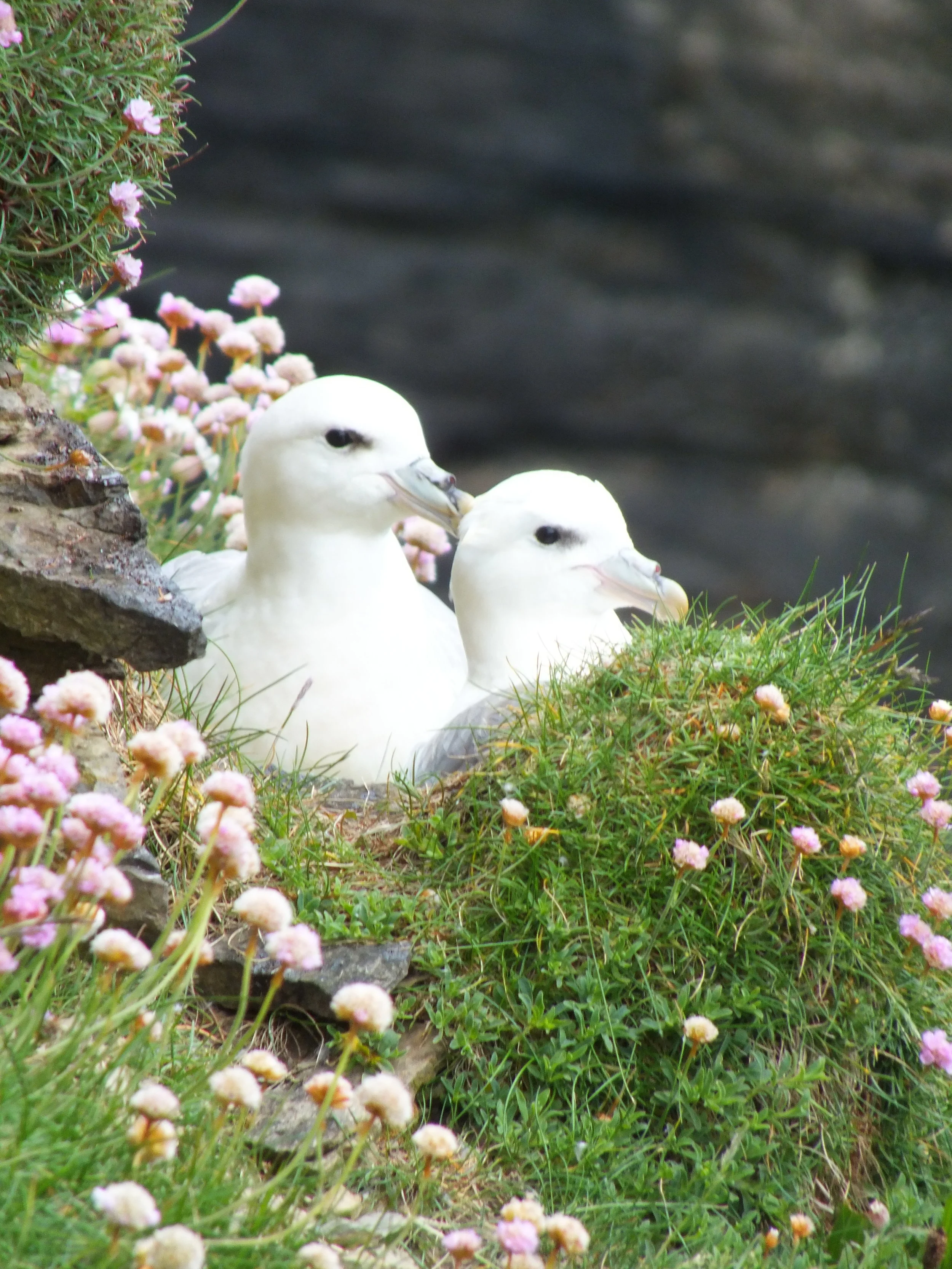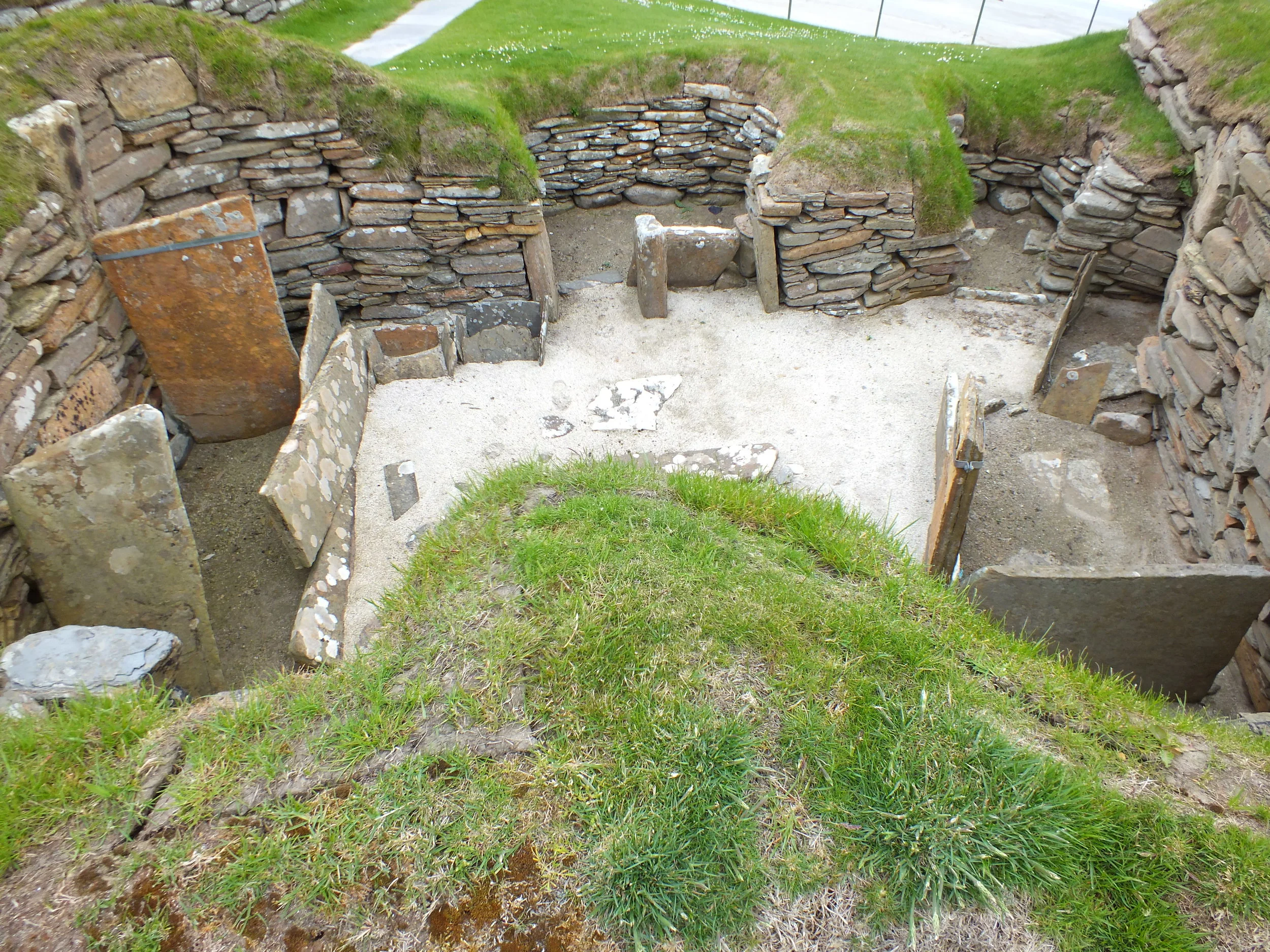Birdwatching in the Shetland and Orkney Islands
It was one of those occasions that even though you know there is a possibility of seeing something special, your other self tells you that it is highly unlikely. This was the case in travelling over to the Orkney Island of Hoy. We had seen the notices about the RSPB’s Eaglewatch initiative on the ferry from Orkney’s Mainland and headed to the hillier north of the island before taking the road out to Rackwick Bay. After a couple of miles, we saw a small van parked up in a lay-by with information boards set up by its side. This was obviously the place.
A volunteer ‘warden’ was there, so we stopped and chatted with him. He explained that this was the second year a pair of white-tailed (or sea) eagles had come to the crags of the hill above the Dwarfie Stone on the opposite side of the valley to breed. It was known that they had not been part of a re-introduction programme which has been very successful for a number of years in the Hebrides, and so a mystery remained around where they had originated. It was the first time in 145 years that the UK’s largest bird of prey had bred in the islands, making it very special indeed. The previous year they had successfully raised two chicks which had been tagged allowing their flights down Scotland’s eastern coast to be monitored.
Although the warden explained that there had been early sightings of two chicks again this year, the feeling was that only one continued to survive. On this particular morning, it was wet and windy and he had seen no activity, believing them to be hunkered down out of the worst of the weather. Then resigning ourselves to missing out on seeing them, the excited warden saw the unmistakable soaring flight of one of the parent birds. Perhaps it had just returned from over the horizon, having been out hunting, or decided to simply stretch its huge wingspan that can be as much as 2.5 metres. It continued to circle, at first coming a little closer to us before receding, and then re-appearing over the high ridge above the crags. Appearing very much like a silhouette, it was wonderful to follow its graceful soar among the thermal currents.
Although this in many ways was the pinnacle of our bird observations on our trip to Shetland and the Orkney Islands, we saw many other birds that are less common in southern England, besides those more familiar to us.
Sea cliffs
Puffin at Sumburgh Head, Shetland
On Sumburgh Head at the southern tip of Shetland Mainland, we were able to peer over the wall and see the birds at close quarters. These included fulmars, a Guillemot colony on the flatter rocks below, but most gloriously of all were the puffins. In one spot, as they stood close to their earth burrows at the top of the cliff, one could almost reach out and touch them. It was as if there was a mutual agreement operating that if we each kept to our respective sides of the wall, then we would get on just fine! Sadly, we were told that they are currently struggling to maintain their numbers due to the climate crisis affecting their main source of food, sand eels.
Great skua resting at Hermaness, Unst
Walking across the moorland to the sea cliffs of Hermaness National Nature Reserve on Unst, we saw several Great Skuas. With a dark brown, slightly mottled plumage, it resembles a gull. In the UK, its distribution is confined to the northern isles. Although we mainly saw them resting among the grasses and heathers of the rougher ground, it is a predator of other sea birds that make their nests on the cliffs and foreshore. At the cliffs themselves, we looked down and across to a major gannetry, and marvelled as they glided about in the wind and then suddenly tucking in their wings to dive deep into the sea for their food. Quite a spectacle.
Gannetry at Hermaness, Unst
It was not only the sea cliffs where top birdlife is seen. At flatter sea shores, arctic terns could regularly be seen skimming over the water and beaches. On occasion they perched on fence posts allowing their slender bodies and black head caps to be appreciated, such as we witnessed at Skaw beach on Unst and at Vidlin on Shetland’s Mainland. Cormorants and shags were regularly spotted around the coastline, with the former nesting at the Vat of Kirbister on Stronsay, Orkneys.
Inland
Redshank on Fetlar, Shetland
Away from the immediate coastline amongst the meadows, higher moorlands, and rough pastures we saw curlews, whimbrels, redshanks and snipe. Lapwings were commonly seen in the fields.
Cormorant nest on cliffs at Vat of Kirbister on Stronsay, Orkney
Having previously regarded the habitat of oystercatchers as being primarily the sea foreshore, they became ubiquitous whether foraging on moorlands, grassland or ploughed fields, sitting on fence posts or searching around lochs and sea shores. Their distinctive call became a soundtrack to our travels. Close to the roadside in rough pasture at Fladdabister on Shetland’s West Mainland, we watched oystercatcher parents caring for their chicks.
Lapwing on Fetlar, Shetland
We also observed flocks of greylag geese in the fields, often seen working their way across the pastures in the same direction to feed such as at Gloup in the north of Yell and more extensively at the Loch of Swannay on Orkney Mainland. Even though we were probably more than 50 metres away at the latter location, they were clearly aware of our presence and protective of their goslings. The parents led them to the loch and out onto the water, where each family then swam in a line with one parent in front and one at the rear.
Oystercatcher with chicks, West Mainland, Shetland
Despite the ‘rarer’ birds being the main attraction, more ‘common’ birds (at least to us) such as blackbirds, starlings and house sparrows were more noticeable, especially around buildings which also attracted nesting house martins. Birds seemed less perturbed, often hanging around in the road or remaining on fence posts by the side of the road – a reflection in part, no doubt of how infrequent vehicles were along some lanes. We were surprised by the prevalence of skylarks, which we had always associated with grassy downlands. Sounding much like a large choir, we soon realised that the song was all produced by just one bird as its trill sound would cease abruptly when deciding to drop to the ground.
Clearly, the timing of our visit to the islands in the nesting season was critical to the variety of birdlife we were able to observe. Nonetheless, for anybody keen on birdwatching, the Shetland and Orkney islands should certainly be placed high on any list for consideration.
N.B. For information on how to get to these islands, see my other blog relating to the Shetland and Orkney Islands.
Family of greylag geese seeking the safety of Loch of Swannay, Orkney











